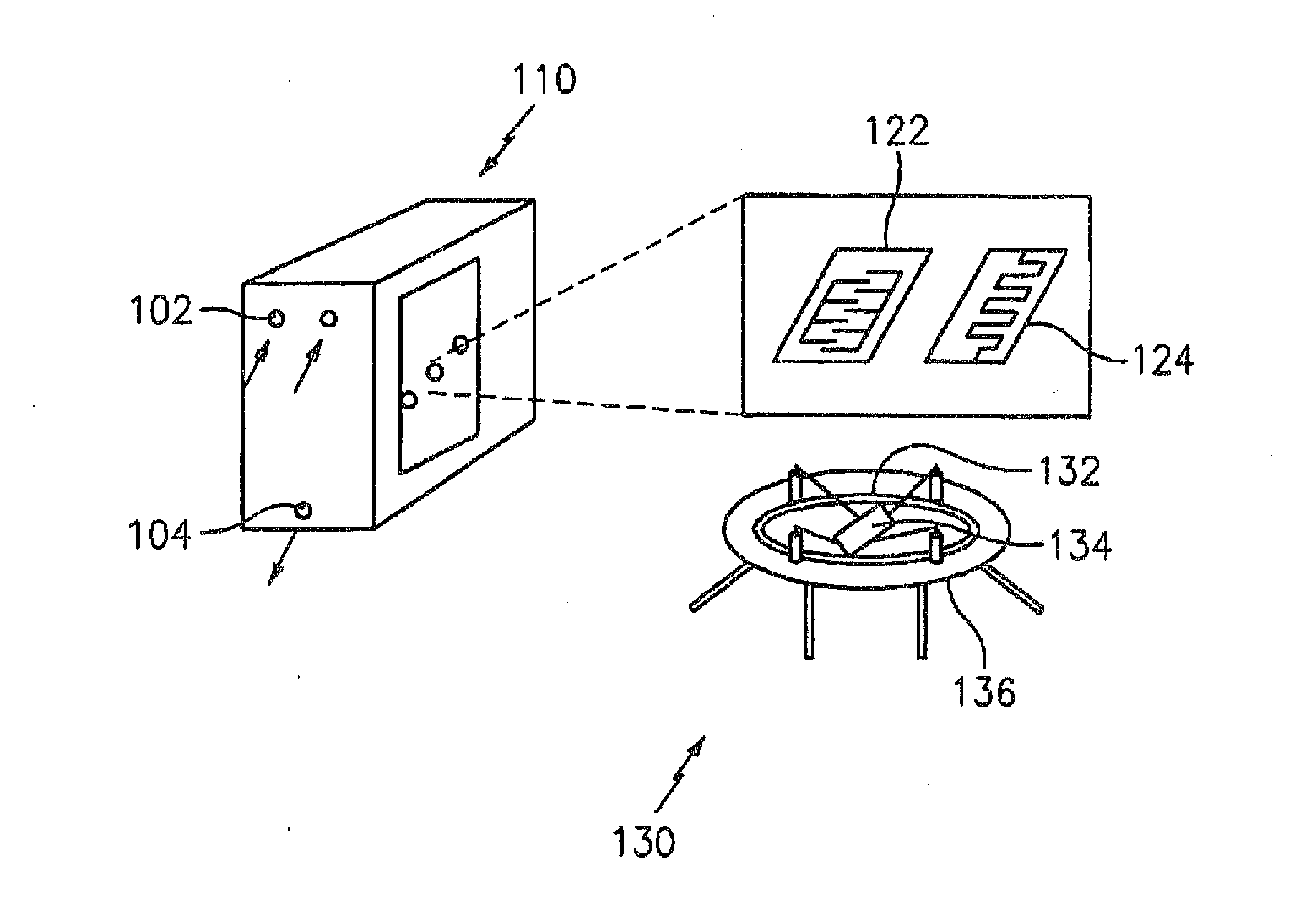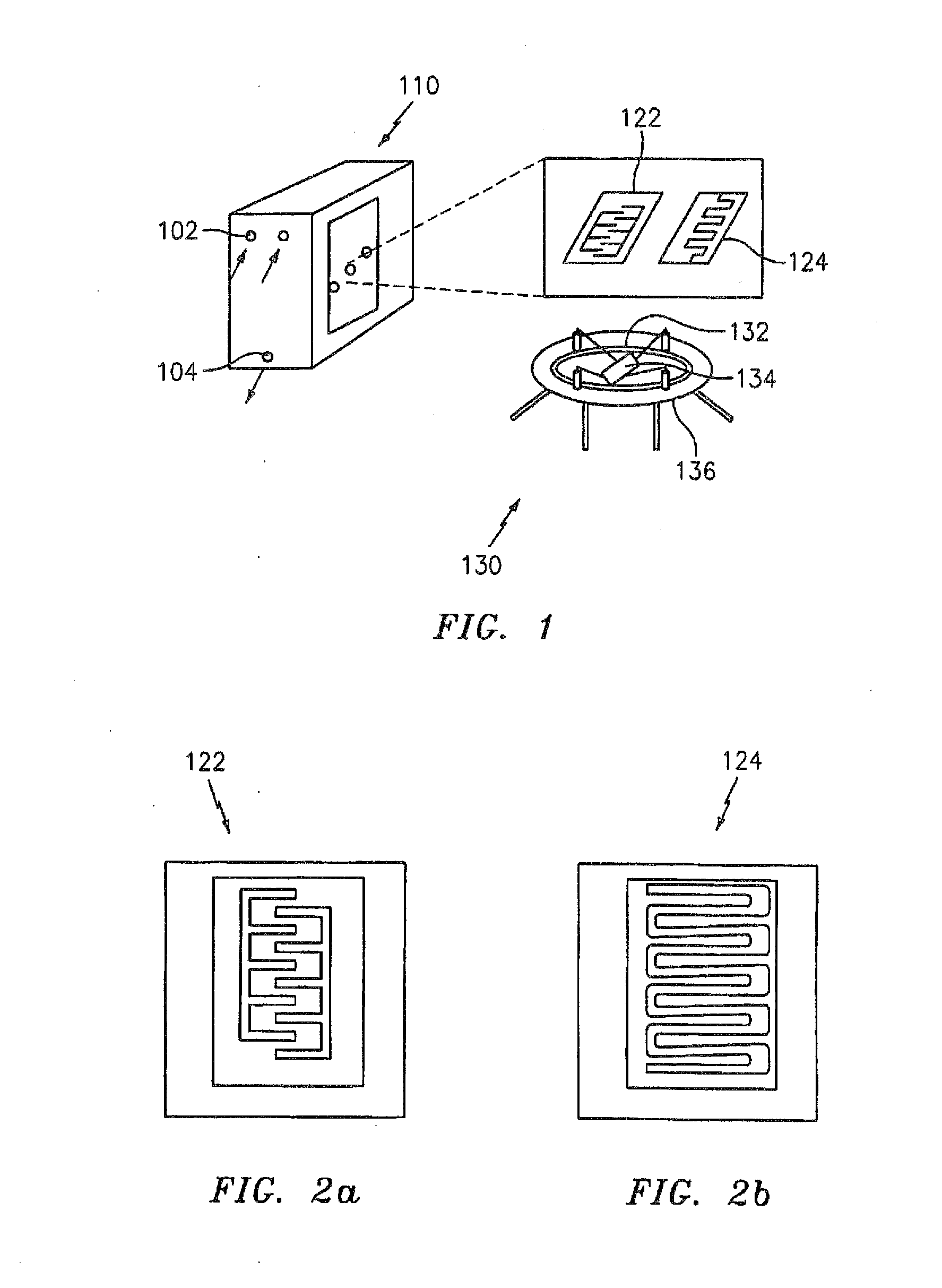Selective Point of Care Nanoprobe Breath Analyzer
a breath analyzer and nano-probe technology, applied in the field of medical devices, can solve the problems of inability to calibrate complex and expensive apparatuses, inability to accurately detect exhaled breath, and inability to adapt to the needs of patients, etc., and achieve the effect of low cos
- Summary
- Abstract
- Description
- Claims
- Application Information
AI Technical Summary
Benefits of technology
Problems solved by technology
Method used
Image
Examples
Embodiment Construction
[0026]The below description of detailed construction of preferred embodiments provides a comprehensive understanding of exemplary embodiments of the invention. Accordingly, those of ordinary skill in the art will recognize that various changes and modifications of the embodiments described herein can be made without departing from the scope and spirit of the invention. Descriptions of well-known functions and constructions are omitted for clarity and conciseness.
[0027]Analysis of breath and skin emission samples for diagnostic purposes has the advantage that the sample to be analyzed is collected from the patient in a non-invasive manner with a minimum of discomfort or inconvenience. Basic components of the medical device used for analysis in accordance with a preferred embodiment of the present invention are shown in FIG. 1. In preferred embodiments of the invention, breath samples are quantitatively and qualitatively processed. Notably, the sensor is tuned to detect NH3 levels low...
PUM
| Property | Measurement | Unit |
|---|---|---|
| concentration | aaaaa | aaaaa |
| concentrations | aaaaa | aaaaa |
| electrical resistance | aaaaa | aaaaa |
Abstract
Description
Claims
Application Information
 Login to View More
Login to View More - R&D
- Intellectual Property
- Life Sciences
- Materials
- Tech Scout
- Unparalleled Data Quality
- Higher Quality Content
- 60% Fewer Hallucinations
Browse by: Latest US Patents, China's latest patents, Technical Efficacy Thesaurus, Application Domain, Technology Topic, Popular Technical Reports.
© 2025 PatSnap. All rights reserved.Legal|Privacy policy|Modern Slavery Act Transparency Statement|Sitemap|About US| Contact US: help@patsnap.com



